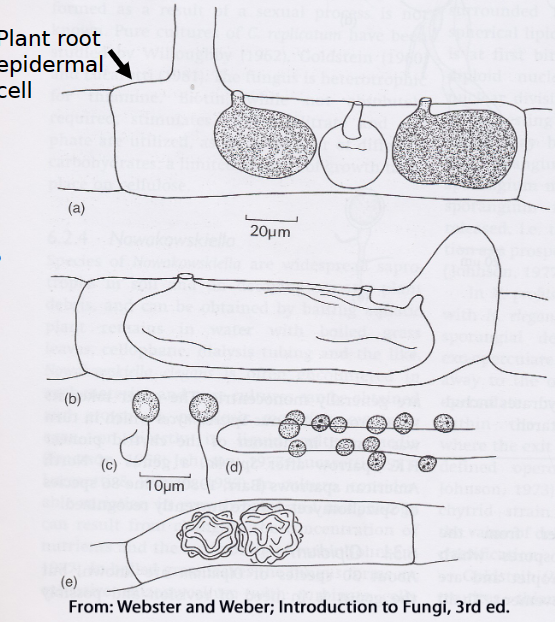Bio 332 lecture 8 Zygomycetes and Chytrids
0.0(0)
0.0(0)
New
Card Sorting
1/10
Earn XP
Description and Tags
Study Analytics
Name | Mastery | Learn | Test | Matching | Spaced |
|---|
No study sessions yet.
11 Terms
1
New cards
The True Fungi
1. Basidiomycota
\
2. Ascomycota
a. Deuteromycetes (Imperfects)
• I hyphomycetes
• II coelomycetes
\
4\. Glomeromycota
\
5\. Chytridiomycota
2
New cards
Taxonomy
Identification of an organism, giving it a name, matching names with creatures
3
New cards
Evolutionary Sythesis
Figuring out how organisms are related and their evolutionary paths
4
New cards
Taxonomy and Evolutionary Synthesis
Both fields are integrated but the **rise of DNA
technologies has sometimes significantly changed
taxonomy**
• In real life, organisms don’t precisely follow the
groups we use to make things convenient
• Phylogenies (dendrograms) are more accurate but
harder to visualize
• We know more today than we did 20 years ago and
will know still more in 20 year
technologies has sometimes significantly changed
taxonomy**
• In real life, organisms don’t precisely follow the
groups we use to make things convenient
• Phylogenies (dendrograms) are more accurate but
harder to visualize
• We know more today than we did 20 years ago and
will know still more in 20 year
5
New cards
The zygomycetes
considered paraphyletic.
A group composed of a collection of organisms, including the most recent common ancestor of all those organisms.
HOWEVER, unlike a monophyletic group, **a paraphyletic taxon does not include all the descendants of the most recent common ancestor.**
\
Frankly, there is still a lot of disagreement on what constitutes the Zygomycetes
\
We include them because they don’t produce zygomycetes stuff???
A group composed of a collection of organisms, including the most recent common ancestor of all those organisms.
HOWEVER, unlike a monophyletic group, **a paraphyletic taxon does not include all the descendants of the most recent common ancestor.**
\
Frankly, there is still a lot of disagreement on what constitutes the Zygomycetes
\
We include them because they don’t produce zygomycetes stuff???
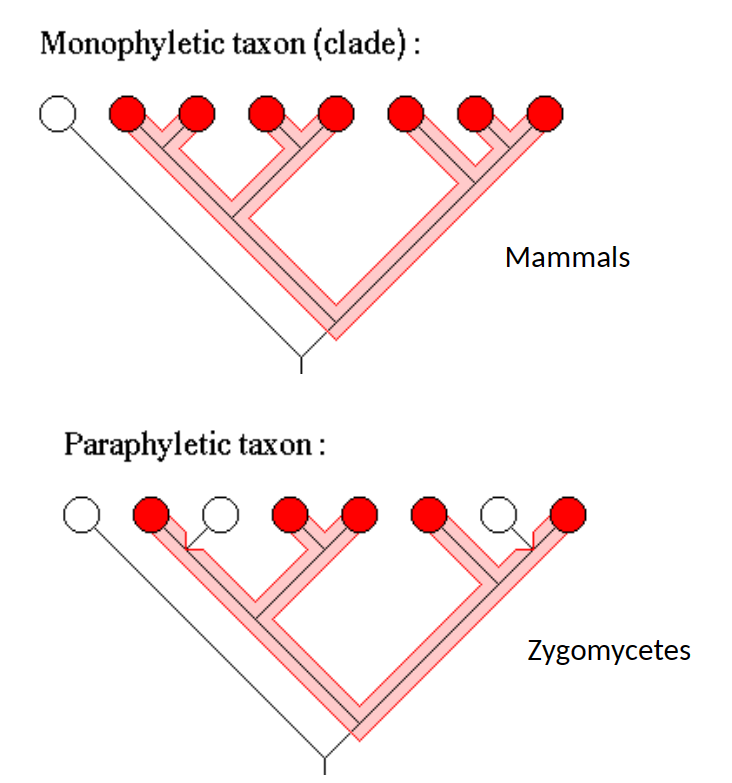
6
New cards
Glomeromycota (Zygomycota)
• Coenocytic(no septations in their cell) hyphae (unlike other true fungi)
• Produce zygospores (sexual resting structures)
and sporangia (with asexual sporangiospores)
• Chitosan instead of chitin
• Only a few plant pathogens
• Mostly cause post-harvest diseases or diseases
of soft berries
• Black bread mold
• Occasionally horticultural crops are infected
• Very important as mycorrhizal fungi
• Produce zygospores (sexual resting structures)
and sporangia (with asexual sporangiospores)
• Chitosan instead of chitin
• Only a few plant pathogens
• Mostly cause post-harvest diseases or diseases
of soft berries
• Black bread mold
• Occasionally horticultural crops are infected
• Very important as mycorrhizal fungi
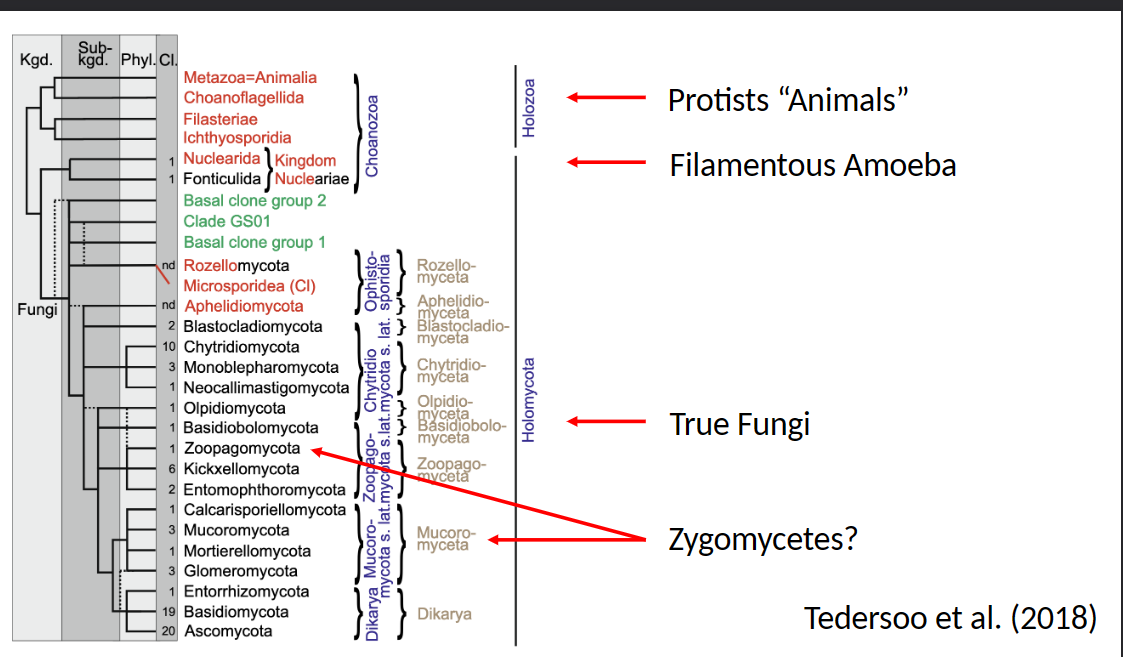
7
New cards
Glomeromycota (Zygomycota) sexual tages
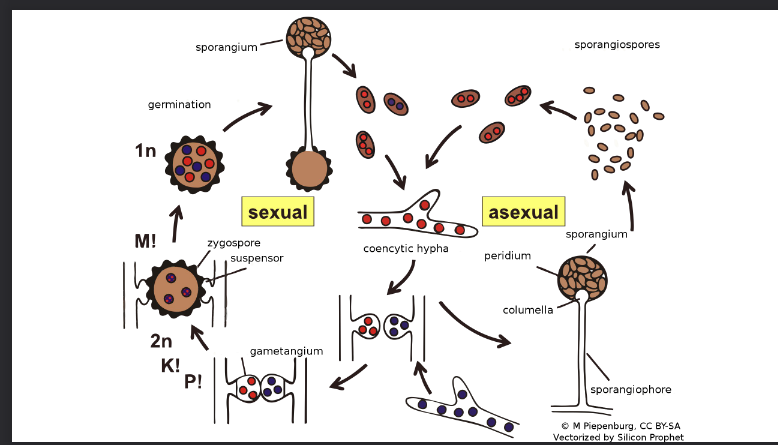
8
New cards
Pilobolus
• Genus of Zygomycete
• Called the dung canon fungus
• Spores get eaten by herbivore, pass through the intestines of animal
• Germinate in animal dung
• Shoot the spores about 10 feet
• Acceleration of the spore subjects it to about 20,000 G’s!
\
• Some parasitic nematodes climb up to the spore to get flung into the path of the herbivore
\
\
• Called the dung canon fungus
• Spores get eaten by herbivore, pass through the intestines of animal
• Germinate in animal dung
• Shoot the spores about 10 feet
• Acceleration of the spore subjects it to about 20,000 G’s!
\
• Some parasitic nematodes climb up to the spore to get flung into the path of the herbivore
\
\
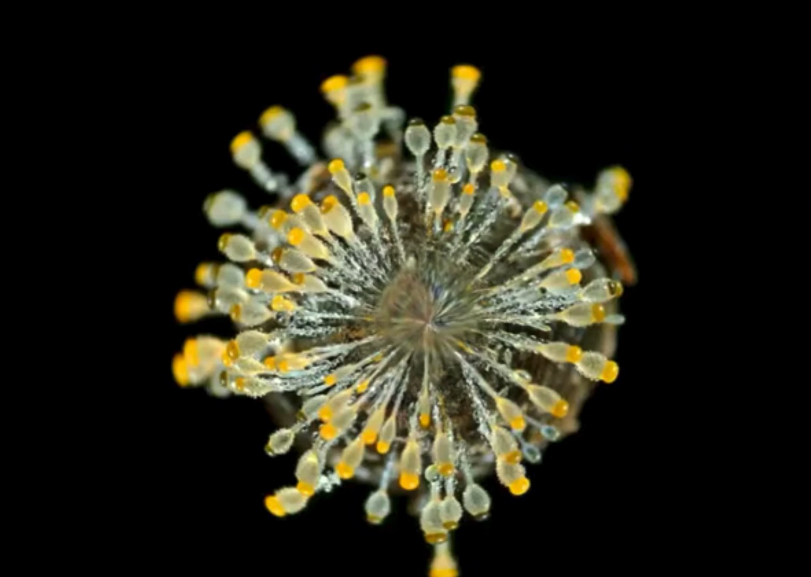
9
New cards
Chytridiomycota
Commonly called chytrids
• Limited mycelium (rhizoids)
\
• Have swimming zoospores (the only exception in the true fungi)(the only to have swimming zoospores)
• Only a few plant parasites
• Mostly decomposers in lakes and ponds
• Major amphibian parasite
• Obligate parasites in plants
\
Two forms
• Synchytrium causes wart of potato;
• Olpidium transmits several viruses
• Limited mycelium (rhizoids)
\
• Have swimming zoospores (the only exception in the true fungi)(the only to have swimming zoospores)
• Only a few plant parasites
• Mostly decomposers in lakes and ponds
• Major amphibian parasite
• Obligate parasites in plants
\
Two forms
• Synchytrium causes wart of potato;
• Olpidium transmits several viruses
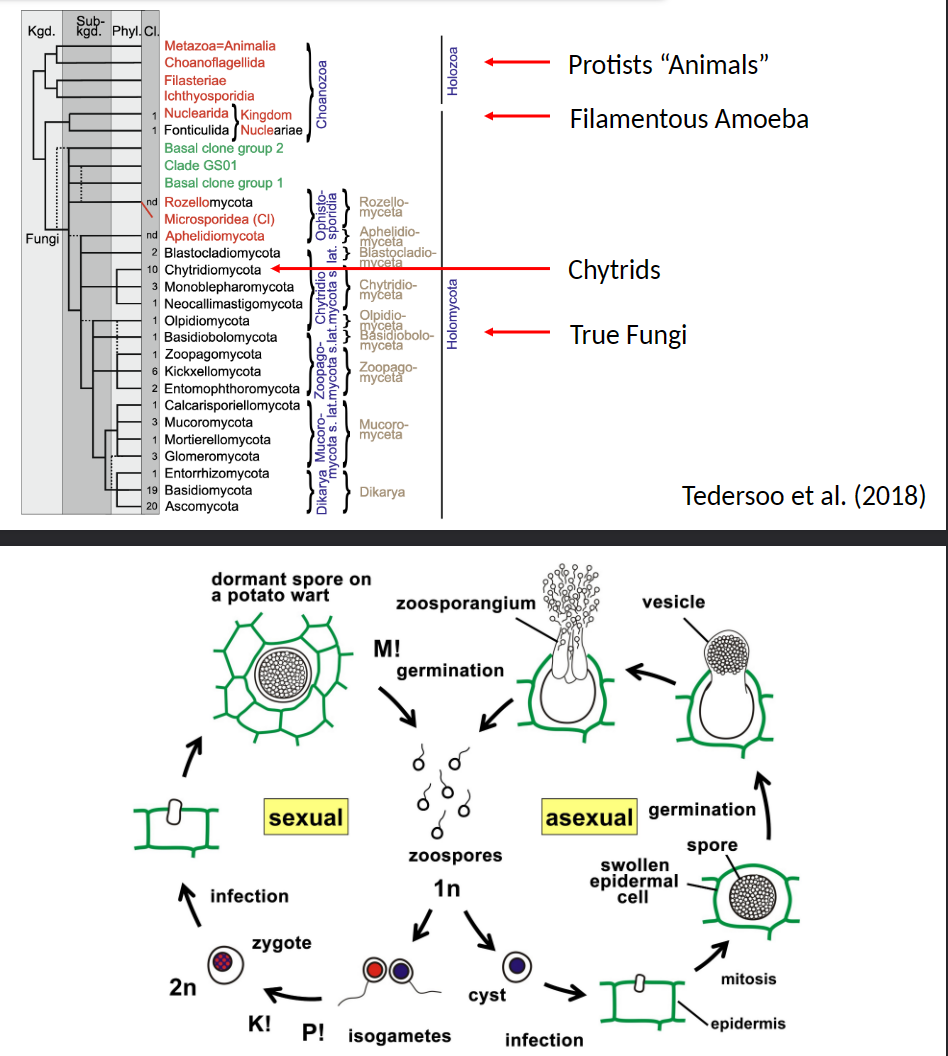
10
New cards
Potato Wart; Synchytrium endobioticum
From the Andes, S. America but spread to England and Europe. In 2000, discovered in Prince Edward Island, Canada; resulting in $30 million losses to economy. 2019, discovered in Georgia, USA
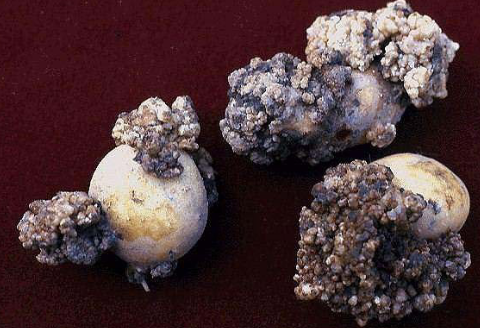
11
New cards
Olpidium
a. Sporangia
\
b. Empty sporangium
\
c. Zoospores
\
d. Encysted zoospores
\
e. Resting sporangia
\
Infection by the Chytrid is trivial but if it carries a virus it can significantly affect susceptible crops
\
b. Empty sporangium
\
c. Zoospores
\
d. Encysted zoospores
\
e. Resting sporangia
\
Infection by the Chytrid is trivial but if it carries a virus it can significantly affect susceptible crops
